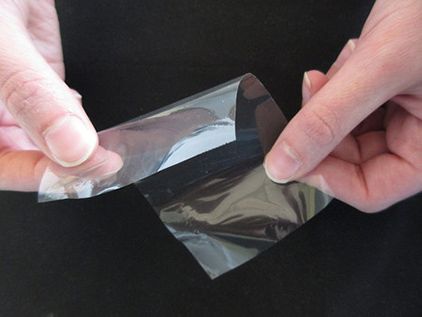Automation has even put poor old Dracula out of a job.
Find out why young blood from transfusions isnt likely to work and why Dracula is out of a job.
George Dvorsky from 2013. Intelligence Augmented vs Artificial Intelligence.
Elan Musk has been having the same idea.
Elon Musk could soon share more on his plan to help humans keep up with AI

Researchers at the California Institute of Technology (Caltech) and the Swiss Federal Institute of Technology have developed a material that can sense changes in temperature with more sensitivity than human skin. The team discovered that flexible films made from pectin demonstrate an electrical response, caused by the release of calcium ions, following very small changes in temperature. Increased temperature causes the pectin molecules to “unzip”, allowing the release and movement of calcium ions.
Published in Science Robotics, this study looked to nature to find biological examples of similar temperature sensitivity. The researchers reported that specialized structures in pit viper snakes could sense similarly tiny changes in temperature, based on the release of calcium ions. Pit viper snakes use these structures to sense the bodily warmth of their prey when hunting at night. The team could replicate this using the artificial film by heating a stuffed toy to 37°C (mammalian body temperature) and placing it in front of the film. The film was able to sense the teddy bear from a meter away within 20 seconds.
Easy to fabricate and inexpensive, these films could be of great benefit for use in smart prostheses, providing an additional sense for disabled folks. In fact, given that the films can respond to temperature more sensitively than human tissues, it could even be akin to a “super sense”. Other potential biomedical applications include smart bandages that can measure and report on changes in temperature as a sign of wound infection.
Jetpack Aviation’s David Mayman and Nelson Tyler have already brought honest-to-god jetpacks out of the pages of science fiction books and onto the market. Now, they plan to do the same with flying cars. We spoke with Mayman at length about Jetpack Aviation’s new manned VTOL multirotor project.
Posted in biotech/medical
In Brief
When you imagine what the cities of the future will look like, it’s hard to think that we can do more than what some nations have already achieved. For instance, Dubai, Japan, and Singapore feature some of the world’s most impressive modern architectural marvels; Helsinki is pioneering a future in data transparency; Brazil is setting the standard for efficient and sustainable mass transportation and eco-consciousness; and Korea is defining an urban landscape anchored on digital connectivity.
But architects and urban planners are letting their imaginations run wild — after all, where else can we go but toward our most outlandish, exciting, and sometimes even dystopian imaginings of the future?
While the USA has been extremely concerned about losing jobs (particularly manufacturing jobs to China), China performed a survey of businesses in the American Chamber of Commerce in Beijing and found that 25% had moved or were planning to move their businesses out of China. Half were going to other Asian countries and 40% to America, Canada or Mexico.
China’s worker wages are rising about 7–8% each year and they have a shrinking working age population as the people age.
China is making big moves in automation and large scale deployment of robotics. In 2014, President Xi Jinping talked about a robotics revolution. China has been the number one buyer of industrial robots since 2013. However, China lags other nations in terms of robots per worker.
We will need a good dose of healthy stoicism if we are to survive in the world after work. Luxury items will be significantly reduced in the world we’re imagining. Stoics like Marcus Aurelius and Seneca recommended that we adjust our desires to simple, reliable pleasures, like fresh water, decent bread, modest clothing, and good friends. Luxury pleasures are rare and unreliable so we suffer more when they fail to materialize.
But chocolate cake is delicious and diamonds are beautiful. When Plato sketched a Spartan lifestyle in the Republic, his friends accused him of designing a city for pigs not humans — and they demanded that he add spices and luxury to the imagined utopia. While I’m sensitive to this worry, I hasten to point out that many Americans are currently, and by their own initiative, downsizing their sense of the good life. The contemporary “tiny house movement” — which builds elegant housing around 1/10th the size of average homes — is already the kind of stoic adjustment that Americans will need to make when we’re all unemployed.